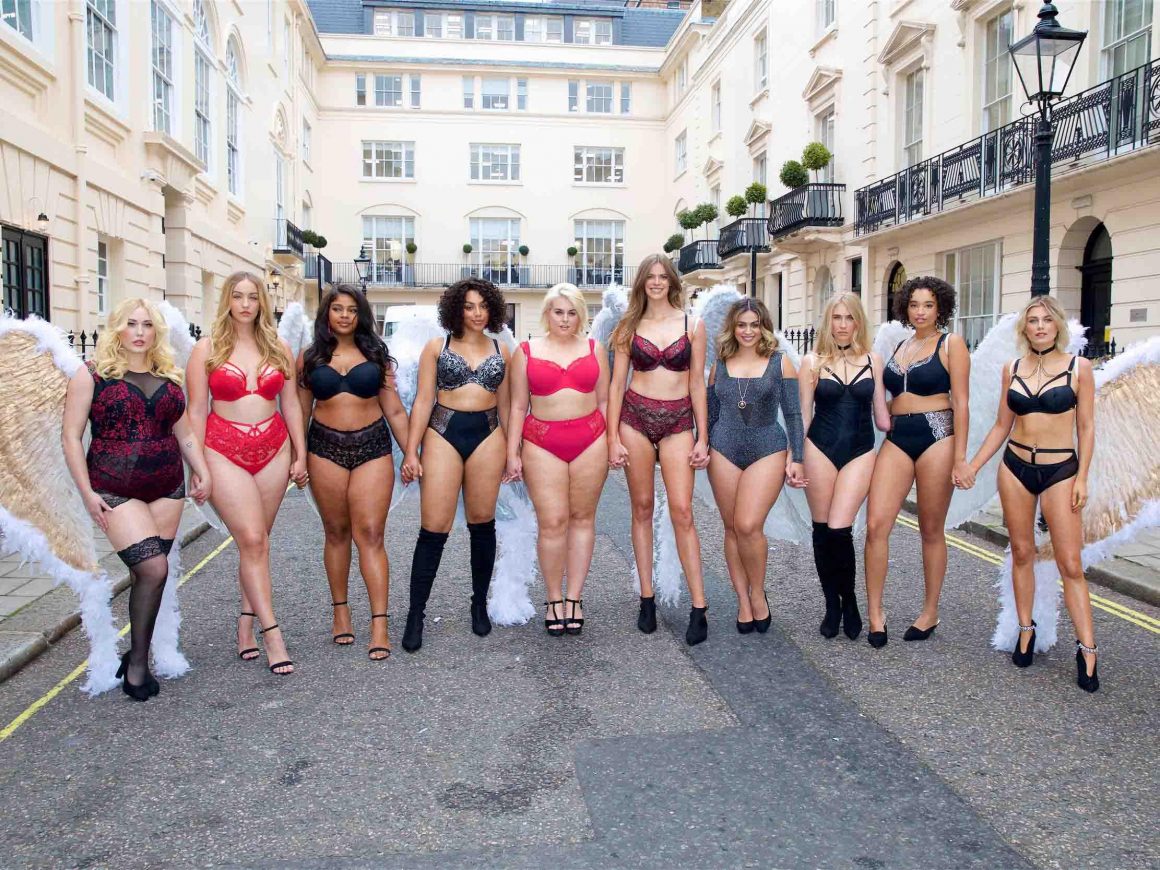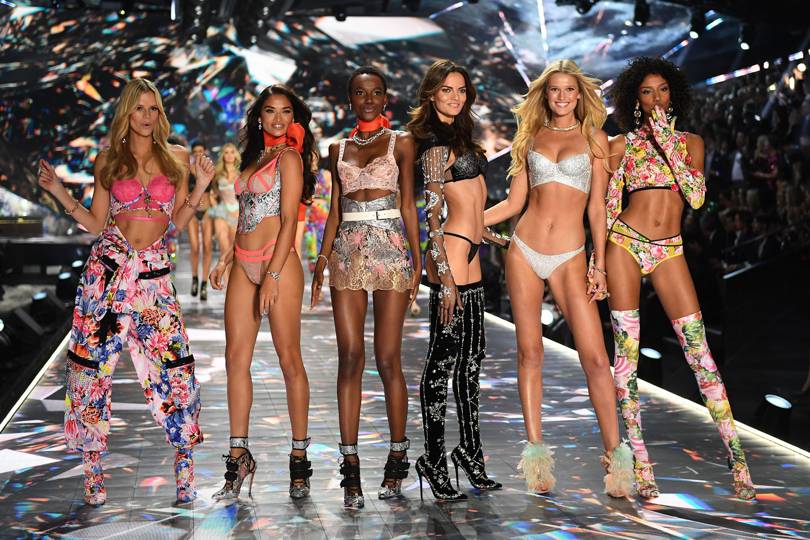This weekend will see the airing of the so-called “Super bowl for supermodels” – The Victoria’s Secret Fashion Show.
The annual show sees a group of the world’s top supermodels take to the catwalk wearing elaborate costumed lingerie. The show is a dream for many aspiring models around the world and is the most watched fashion event of the year. However, since its inception the show has received its fair share of criticism; from issues over broadcast quality in its early years, to being labelled blatant commercialism, to calls for a more inclusive line up in recent years. Is the Victoria’s Secret fashion show a serious problem or a light-hearted spectacle?
This year the show returned to its home in New York after two years at locations abroad and will be broadcast on Sunday 2nd December on ABC (a UK channel has not yet been announced). The show generally features a mix of seasoned Angels, high profile names and a batch of newcomers and lesser known faces. Some of the top models who took to the catwalk this year included Adrianna Lima, Romee Strijd, Taylor Hill, Gigi Hadid, Kendall Jenner and Barbara Palvin; with entertainment from Halsey, Rita Ora and Shawn Mendes. Getting cast in the show is seen as a huge honour within the modelling industry and is extremely difficult to do. Part of being cast in the show is having the ‘ideal’ Victoria’s Secret body which models work hard to achieve – although not confirmed by Victoria’s Secret many insiders claim that these ideal characteristics include a height of 5’9” or taller and body measurements of 34-24-34.
One of the biggest criticisms aimed at the Victoria’s Secret Fashion show is that it isn’t inclusive, especially in terms of featuring bodies of all shapes and sizes. The measurements Victoria’s Secret covets are not representative of normal women – the average UK woman is 5’5’ and a dress size 16. Some have argued that by only featuring one type of body in the show Victoria’s Secret are perpetuating the idea that only that body type is beautiful, and that the show damages women’s self-esteem.

This year, in reaction to the Victoria’s Secret show, plus-sized model and advocate Robyn Lawley was joined by a diverse cast of models ranging from a size 10-22 to walk in the ‘We’re All Angels’ lingerie show staged by Simply Be. Lawley has organised a petition to boycott the Victoria’s Secret fashion show until they commit “to representing ALL women on stage”.
Plus-sized model Tess Holliday has also weighed in on the argument, becoming another plus sized advocate to call for a boycott on the Victoria’s Secret show. She took to her Instagram to express her anger at the brand writing “Who needs VS anyway? They never supported plus ladies & now they’re trying to dis my trans sisters? Hell nah. Kiss my fat a**.” This came after Ed Razek, L Brands’ Chief Marketing Officer of Creative Services, made controversial comments regarding casting transgender models in future shows, which was seen by many as another example of Victoria’s Secret’s unwillingness to diversify.
Whilst some have pointed to Victoria’s Secret’s heavy emphasis on physical fitness as an explanation for their choice in models. The other side has contended that fitness is not limited to those who wear very small clothing sizes – plus size supermodel Ashley Graham regularly trains at the same New York gym where many of the Angels are regulars.
One of the big problems for Victoria’s Secret in increasing body diversity within their shows is that the brand simply doesn’t carry the sizes. Victoria’s Secret stores carry sizes no larger than a 40DDD and a size XL (equivalent to a UK 16). The issue is that most plus sized models would not fit in the sizes available within the Victoria’s Secret brand. Therefore, if they wanted any increase in size diversity within the fashion show surely to seem genuine they would have to increase their size range available in stores. This is something they do not seem willing to do, Ed Razek said that he didn’t think Victoria’s Secret “can be all things to all customers. It is a speciality business; it isn’t a department store.” He went on to say that “we market to who we sell to and we don’t market to the whole world” this seems to decisively say that Victoria’s Secret will not be expanding its range.
Since 2016 Victoria’s Secret’s parent company L Brands has reported quarter after quarter of shrinking profits and declining sales, and CBS reported a 30% decline in ratings from viewers aged 18 to 49 in 2017. In recent years’ lingerie giants such as Aerie, ThirdLove and Savage x Fenty, have built their brands on messages of body positivity, diversity and photoshop free campaigns – a contrast to the messaging from Victoria’s Secret. Are consumers turning away from Victoria’s Secret in favour of these more inclusive messages?
Of course one of Victoria’s Secrets big defences is that the show isn’t about real life. These women aren’t supposed to look real, they’re supposed to be angels and women shouldn’t be comparing themselves to this “fantasy”. Kelly Cutrone, owner of People’s Revolution a company that produces fashion shows, explained the thought process behind runway models and why women shouldn’t compare themselves to them. She said “Runway models have to have a certain look … clothes look better on thin people. The fabric hangs better.” However, she went on to say that “women shouldn’t be comparing themselves with these girls. These girls are anomalies of nature…they are not average.”

Further, when it comes to questions over diversity Victoria’s Secret argues there is more to diversity than just featuring plus-size models. Monica Mitro, EVP of PR at Victoria’s Secret said: “These women represent so many important aspects of diversity that should be celebrated beyond solely focusing on their bodies.”
The Victoria’s Secret Fashion Show has been making significant strides in racial diversity within the fashion industry – models of colour made up nearly 50% of 2017’s cast and natural hair is regularly seen on the catwalk. This year Winnie Harlow became the first model with vitiligo to be cast in the show adding to the diversity of Victoria’s Secret’s cast and said she wanted to “shatter pre-existing beauty standards.”
An additional defence for the show can also be found in a recent study into reactions to slim female images in advertising. Researchers found that when the idealized female images are presented blatantly (as one would argue they are in the Victoria’s Secret show) we detect the ideal being thrown in our faces. Therefore, we fortify our own self-image as a defence mechanism and as a result our self-esteem actually increases. Saying that watching the show will boost your self-esteem may be a step too far but this research does suggest that it might not be having such a negative effect on women.
Supporters of the Victoria’s Secret fashion show have argued that the show has made strides in many aspects of diversity and at its heart is a show that celebrates women. While others may even argue that you can’t please everyone all of the time, there’s always bound to be someone who’s not represented.
But that doesn’t take away from the issues that many see with the show. To see plus sized women on the runway is a dream for many in the body positive community, who hope that all bodies can be loved and celebrated. Many brands are already introducing or developing alongside the idea of inclusivity and the fact that Victoria’s Secret isn’t joining in does make them seem somewhat dated.
Is the Victoria’s Secret fashion show outdated and impossible to maintain in a post MeToo, body positive world? Can it evolve? Should we rely on a fashion show to dictate our self-esteem?
Victoria’s Secret are the only ones who know whether a change will come but whatever the decisions made by the company it seems important to remind ourselves that no matter your race, size, gender, sexuality etc. we are all beautiful and deserve to feel it.
Sources:
http://usatoday30.usatoday.com/news/health/2006-09-25-thin-models_x.htm
https://www.huffingtonpost.co.uk/entry/womens-self-esteem_us_2774083
https://www.glamour.com/story/victorias-secret-fashion-show-body-diversity
https://www.refinery29.com/en-gb/2018/11/216488/victoria-secret-fashion-show-diversity-comments
https://www.thisisinsider.com/victorias-secret-cultural-diversity-appropriation-accusations-2018-11











